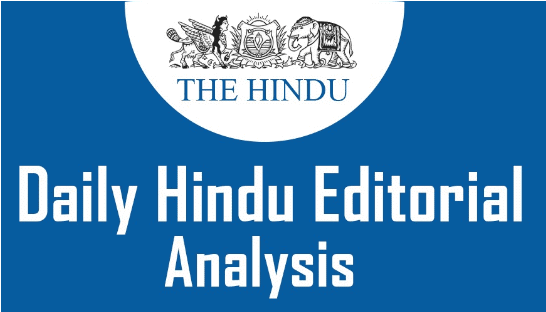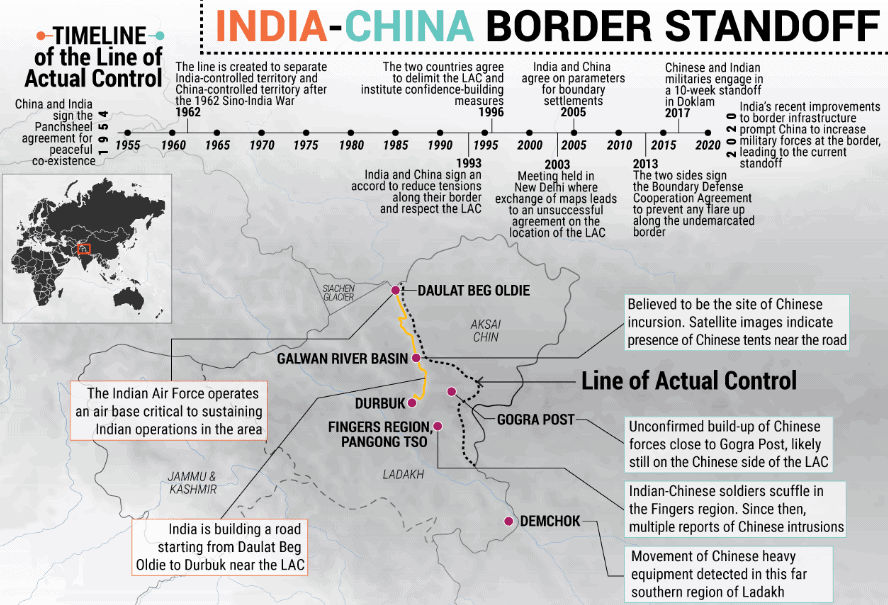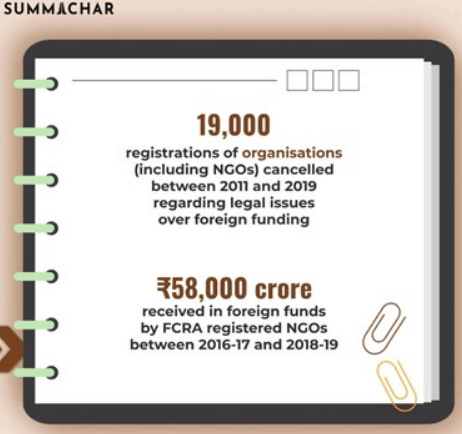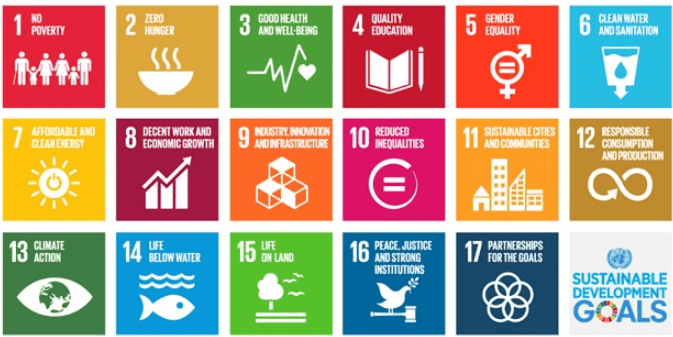The Hindu Editorial Analysis- 25th Sept, 2020 | Additional Study Material for UPSC PDF Download

1. TERMS OF DISENGAGEMENT: ON INDIA-CHINA STANDOFF-
GS 3- Security challenges and their management in border areas
Context
That India and China have agreed to stop sending more troops to the frontline is a welcome step towards hitting pause on the rising tensions along the LAC.


Welcome Step
(i) Indeed, the genesis(start) of the tensions lies in China’s large-scale deployment of troops to forward areas in May.
(ii) Later there were subsequent multiple transgressions(violation) in the Galwan Valley, Pangong Lake, Gogra, Hot Springs, and Depsang plains that have violated almost every core tenet(principle) of the four border agreements that have helped keep the peace since 1993.
(iii) This has forced India to match the Chinese deployment, leading to an extraordinary build-up on a scale not seen since 1962.
(iv) The new agreement of September 21, at the sixth round of Corps Commander talks since June, will put a stop to this build-up, that is, if it is implemented sincerely.
(v) The joint press release said the sides had agreed to strengthen communication on the ground, avoid misjudgments, and to refrain from unilaterally changing the situation on the ground.
(vi) It also stated to hold a next round at an early date, underlining that many issues remain unresolved.
Far From Over
(i) If this agreement can potentially help stem(stop) the bleeding as it were, it does not address most of India’s fundamental concerns on the LAC.
(ii) Prior to the talks, Indian officials had highlighted the key points of their agenda as having China withdraw from all friction points including Depsang and Pangong Tso.
(iii) India also demanded granting unhindered access to all patrolling points (PPs). China has blocked access to 10 PPs since May.
(iv) The joint press release makes no mention of restoration of the status quo ante(previous existing state) of April, only referring to no unilateral changes to the ground situation, which refers to the current status quo.
(v) It is true that one or two rounds of talks cannot be expected realistically to resolve a situation that is, in many ways, even more complex than the 1986 Sumdorong Chu stand-off — and that took six years before the status quo was restored.
(vi) At the same time, a second joint public statement in as many weeks is a positive development in itself, showing both have the intent to stabilise the situation, even if their motivations may be different.
(vii) For the Indian government, such a statement in the midst of a Parliament session where it has faced questions over its handling of the LAC situation sends the message that the China crisis is under control.
(viii) For China, the motivations could be two-fold — either a tactical pause that gives it time to prepare for further military manoeuvres(operation), as was the case in end-August south of Pangong Lake.
(ix) Second one can be a signal that Beijing wants to dial down tensions, albeit(although) on its own terms and most likely without giving up the territorial gains it has made since May.
(x) Whichever may be the case, the reality for Delhi is that the challenge along the LAC may be far from over.
Conclusion
Military-level talks help avoid confrontation, but the China border remains a challenge.
2. THE FOREIGN HAND: ON FCRA AMENDMENTS-
GS 2- Government policies and interventions for development in various sectors and issues arising out of their design and implementation
Context
Amendments to the FCRA, drafted without consultation with stakeholders and passed with limited discussion in Parliament, further clip(cut) the wings of India’s battered(troubled) civil society.

Delinking
(i) New regulations put onerous(heavy) conditions on civil society organisations, and educational and research institutions that have partnerships, including of a financial nature, with foreign entities.
(ii) Passions overwhelm(overpower) rationality in conversations on foreign influences, and it could well be true that a portion of such foreign assistance may be reaching the wrong hands.
(iii) In Parliament, the BJP alleged that foreign money was being used for religious conversions. In 2017, the government barred American Christian charity, Compassion International, accusing it of supporting conversions.
(iv) The debate on religious propagation and conversions must be delinked from the question of foreign funding.
(v) There are adequate laws against conversion by inducement(greed), and the right or wrong of it cannot be decided against the touchstone of the source of funds, native or foreign.
(vi) Some of the restrictions appear well meaning, but could impact NGOs besides showing up India to be overregulated.
Violating International Obligation
(i) The International Commission of Jurists has said the new law was incompatible with international obligations(duties) and India’s own constitutional provisions on rights.
(ii) Seamless sharing of ideas and resources across national boundaries is essential to the functioning of a global community.
(iii) It should not be discouraged unless there is reason to believe the funds are being used to aid illegal activities.
(iv) Prime Minister has often cited the ancient Indian ethos of Vasudhaiva Kutumbakam as the framework for its global engagement.
(v) The pandemic has only underscored(highlighted) the importance of this approach. As a growing economy, India under Mr. Modi has been proactive in seeking global capital and technology.
(vi) The aversion(disliking) appears to be towards select categories of global ideas and ideals — environmentalism, human rights and civil liberties.
(vii) Organisations working in these fields have often had their patriotism being called into question.
(viii) To be fair, this approach predates the current government, and it was during the UPA that an official report even quantified the GDP losses allegedly caused by environmental NGOs, insinuating a foreign conspiracy against India.
(ix) Such paranoia(fear) does not go well with India’s legitimate ambitions to be a global player.
(x) The BJP and the Congress are well aware of the limits of the national-foreign binary.
(xi) In 2017, both joined hands to legislate an escape route after receiving funds from foreign entities in violation of FCRA provisions.
(xii) Thousands of NGOs serve extremely disadvantaged sections, at times filling in for the state, at others, supplementing it.
(xiii) A presumption of guilt against them all, followed by control, amounts to throwing the baby out with the bathwater.
(xiv) The world is poorer when new barriers(restrictions) are raised.
Conclusion
NGOs fill in for the state; regulations should not stifle(hinder) their functioning.
3. ENVIRONMENTALISM AT THE CORE-
GS 3- Conservation, environmental pollution and degradation, environmental impact assessment
Context
(i) The United Nations Millennium Development Goals and the World Bank Group’s global practices have recognised sustainability as an essential issue of global importance.
(ii) Economic, social and other forms of sustainability have evolved over the years, but it is environmental sustainability that has gained significant popularity.

Environmental Sustainability
(i) Environmental sustainability is understood as buying greener products, avoiding hazardous materials, energy optimisation, and waste reduction.
(ii) Some firms are still reluctant to engage in environmentally beneficial activities as they are afraid to compromise on the economic benefits.
(iii) And some others have positioned environmental practices at the forefront due to legislation, and industry and government commitments.
(iv) In several firms, high importance has been given to environmentalism due to compelling regulatory norms, and a potential to manage costs, risks and optimise eco-friendly practices.
(v) However, in this process, organisations, especially in the manufacturing sector, get so serious about the low-hanging fruits of waste reduction and energy efficiency improvements that they fail to recognise the need for restructuring their learning imperatives(need) and see the big picture of environmentalism.
(vi) While government norms, organisational policies and corporate environmental responsibility projects drive environment-friendly practices, these are merely short-term actions towards environmental sustainability.
Long-Lasting Benefits
(i) Only through organisational learning can people be urged to work towards long-lasting benefits.
(ii) In this context, green supply chain practices are useful. These include green procurement, green manufacturing, green distribution, and reverse logistics.
(iii) With practices starting from acquisition of eco-friendly raw material to disposal/ reuse/ recycle of used products,employees, suppliers, distributors, retailers and customers will be able to integrate environmental concerns in the daily operations of a firm.
(iv) Thus, green supply chain practices enable organisational learning in environmental sustainability.
(v) Our research, based on a survey of 220 respondents across 21 manufacturing units in India, points to the inter-linkages between green supply chain practices, organisational performance and learning.
(vi) We found that these inter-linkages not only lead to a long-lasting natural drive towards environmental performance, but also to higher economic performance.
(vii) Research shows that the positive impacts of environmentalism can only be felt in the long term when they get embedded(fitted) into organisational learning systems through green supply chain practices.
(viii) The resultant learning system smoothens the knowledge flow in the organisation and help firms to strategise for better performance, bearing in mind the environmental aspects.
(ix) This further promotes environmentalism across all players in manufacturing supply chains.
(x) Thus, environmental sustainability is ensured from the source (willingness) and not through force (regulations).
Conclusion
(i) Drawing linkages between green supply chain practices, corporate environmental performance, corporate economic performance and the dimensions of learning organisations in firms is necessary for an organisation’s progress and environmental protection in society.
(ii) Understanding these inevitable links will enable managers and experts to shape their organisational values, work practices, and performances for the greater good of society.
(iii) We infer that when the different players of a manufacturing supply chain realise the inherent benefits associated with organisational learning dimensions, their drive towards environmentalism increases.
(iv) Policymakers should support this thinking by not merely imposing environmental practices as regulatory norms but by emphasising on the creation of green supply chain-based learning systems in manufacturing.
|
21 videos|562 docs|160 tests
|
FAQs on The Hindu Editorial Analysis- 25th Sept, 2020 - Additional Study Material for UPSC
| 1. What is the significance of the Hindu Editorial Analysis for UPSC preparation? |  |
| 2. How can the Hindu Editorial Analysis help in improving my language skills for UPSC? |  |
| 3. Is it necessary to read the entire Hindu newspaper for UPSC preparation or is the Editorial Analysis sufficient? |  |
| 4. How can I effectively utilize the Hindu Editorial Analysis for essay writing in the UPSC exam? |  |
| 5. Can the Hindu Editorial Analysis be used for other competitive exams apart from UPSC? |  |





















